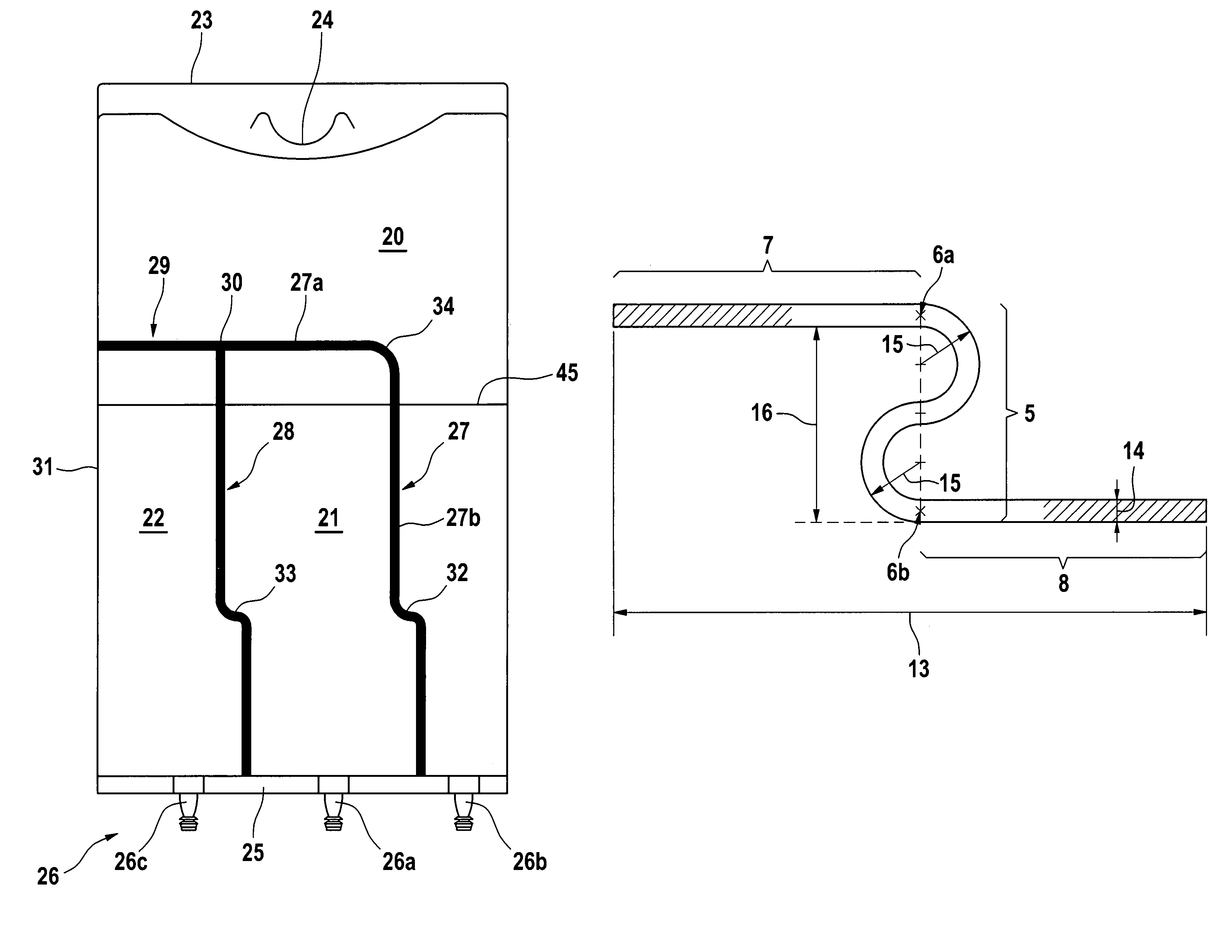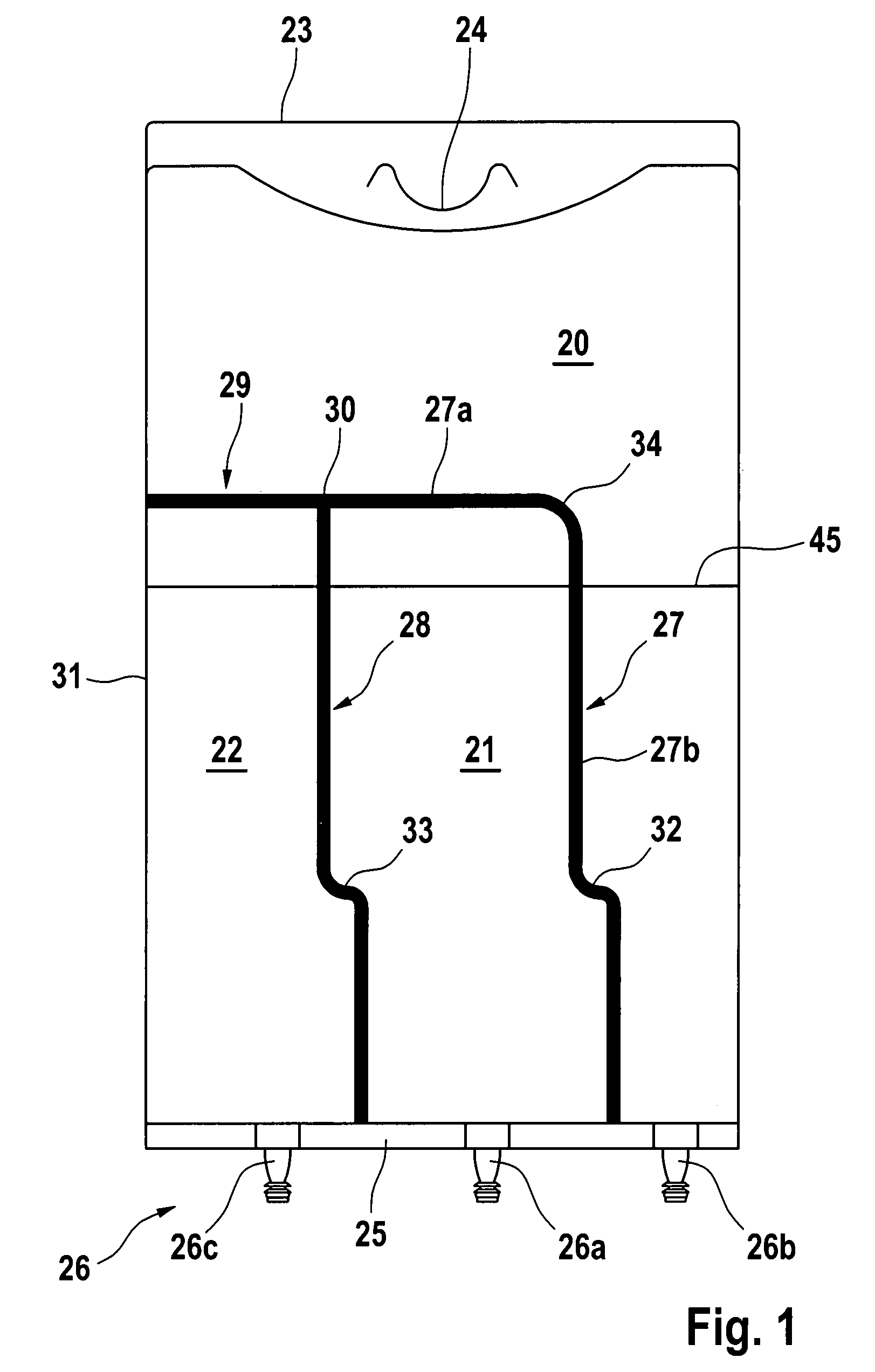Medical container with improved peelable seal
a technology of peelable seals and medical containers, which is applied in the field of containers for storage of pharmaceutical agents, can solve the problems of peelable seals already opened, difficult to open seams, and risk of unintentional opening when handling containers
- Summary
- Abstract
- Description
- Claims
- Application Information
AI Technical Summary
Benefits of technology
Problems solved by technology
Method used
Image
Examples
example 1
[0096]A) General Procedure for Forming a Container According to FIG. 3
[0097]Containers as shown in FIG. 3 were manufactured from a cast, polyolefin-based film (Excel). The peelable seals were welded at different temperatures from 113-120° C. to achieve different weld strengths, 3 seconds and 4 bar.
[0098]Permanent seals were welded at 130° C., 1.5 seconds and 4 bar. Welding was performed with the hot bar technique.
[0099]B) Performed Tests
[0100]Bags according to FIG. 3 have been manufactured according to the above procedure with different shapes of peelable seals shown in FIGS. 4 to 8. Three different peelable seal strengths were used that were about 10 N, 20 N and 30 N. Every sample group contained 20 bags. 10 bags were filled with water and seven of these were overwrapped and sterilised with a water spray autoclave cycle (F0=12, temperature 121° C.). The following tests have been performed on each sample group.
[0101]Tensile Test:
[0102]Tensile test was performed on 30 mm wide strips ...
example 2
[0150]A) General Procedure for Forming a Container According to FIG. 1.
[0151]Containers as shown in FIG. 1 were manufactured from a blown tube film (Biofine) based on polyolefins. The peelable seals were welded at different temperatures from 122 to 128° C. to achieve different weld strengths, 3 seconds and 4 bar using the hot bar technique. The rupture zone (peak) was placed at 40 mm, 100 mm and 160 mm from the bottom weld. The total bag length was 400 mm, the bag width was 280 mm and the total length of the peelable seals was 260 mm. The total fluid volume in the bag was 1500 ml.
[0152]Permanent seals were impulse welded.
[0153]B) Performed Tests
[0154]Bags according to FIG. 1 have been manufactured according to the above procedure with different peak positions. Peelable seals were welded at 122, 124, 126 and 128° C. Every sample group contained 10 bags. The bags were not autoclaved. The following tests have been performed on each sample group.
[0155]Tensile Test:
[0156]Tensile test was...
PUM
 Login to View More
Login to View More Abstract
Description
Claims
Application Information
 Login to View More
Login to View More - R&D
- Intellectual Property
- Life Sciences
- Materials
- Tech Scout
- Unparalleled Data Quality
- Higher Quality Content
- 60% Fewer Hallucinations
Browse by: Latest US Patents, China's latest patents, Technical Efficacy Thesaurus, Application Domain, Technology Topic, Popular Technical Reports.
© 2025 PatSnap. All rights reserved.Legal|Privacy policy|Modern Slavery Act Transparency Statement|Sitemap|About US| Contact US: help@patsnap.com



